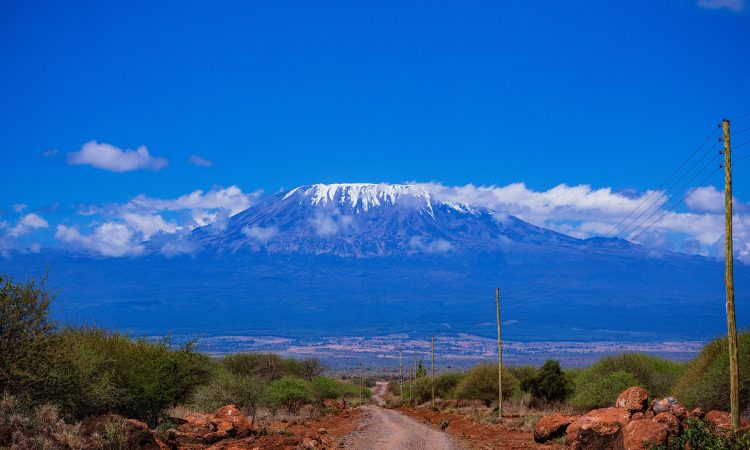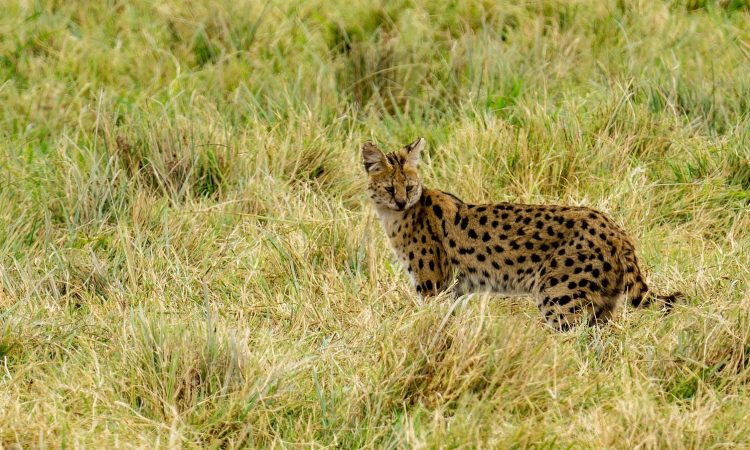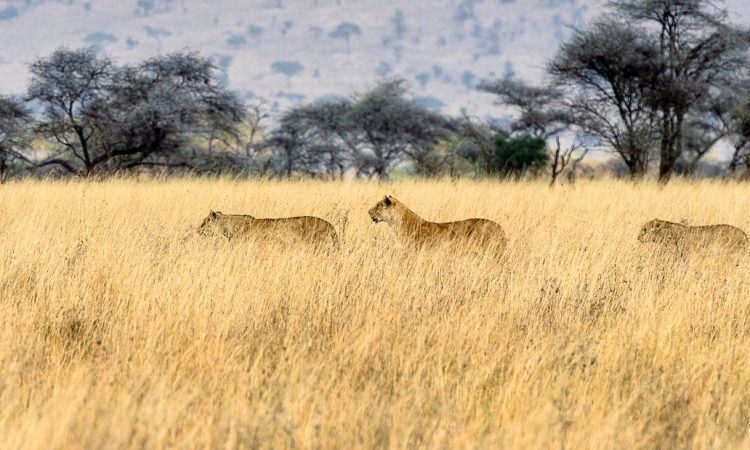Serengeti National Park Serengeti National Park is one of the most famous tourism destinations not only in Tanzania but also in the world.
The Tanzania national park covers an area of 15,000 square kilometers teeming with wildlife.
The name Serengeti comes from a local Maasai word, “siringet,” translated to mean “a place where land runs forever.”
Serengeti National Park is home to about 500 species of birds, 4,000 lions, 1,000 leopards, 1.3 million wildebeests, 400,000 zebras, 550 cheetahs, and much more.
Serengeti National Park is characterized by Savannah grasslands, riverine forests, woodlands, forests, swamps, and more, supporting a habitat for several wildlife species.
See our most popular Serengeti safari tours here.
Entrance Fees
Foreign non-resident adults pay $70, foreign resident citizen adults pay $40, East African citizen adults pay 10,000 Tanzanian shillings, foreign non-resident children pay $20, foreign resident children pay $10, and East African citizen children pay 2,000 Tanzanian shillings.
Children below 5 years of age stay free of charge.
History of Serengeti

Serengeti National Park was designated as a World Heritage Site by UNESCO in 1981.
The present-day Serengeti National Park was first designated as a game reserve in 1930, covering an area of 2,386 square kilometers.
The area was upgraded to national park status in 1940, and the Serengeti National Park Board of Trustees was formed in 1948 to protect the park.
The reserve area was enlarged in 1951, and traditional Maasai pastoralists who coexisted with wildlife while grazing their cattle on the Serengeti plains were restricted from grazing in the Serengeti and pushed to areas around Ngorongoro Conservation Area.
In 1959, Bernhard and his son Michael produced a book documenting it as “Serengeti Shall Not Die.”
This attracted many travelers to visit the park, making it even more famous.
The hydrology of the Mara River has been affected by deforestation in the Mau Forest region, and the human population continues to grow rapidly.
Approximately 200,000 animals are killed by poaching every year, although conservation efforts are still in place to protect the park’s wildlife.
The dotted Moru Kopjes in the park act as a watch area for many predators looking for prey on the plains.
Wildlife Viewing

Serengeti National Park is one of the best areas for wildlife watching on Earth.
Game drives in the park can never disappoint year-round, and some of the wildlife you can see in Serengeti includes lions, rhinos, zebras, topis, Cape buffalos, wildebeests, African bush elephants, leopards, warthogs, spotted hyenas, African wild dogs, impala, Grant’s gazelle, cheetahs, elands, black-backed jackals, Caracal, aardvark, aardwolf, common genet, African civet, African wildcat, hippos, cape hare, olive baboons, patas monkeys, velvet monkeys, crested porcupine, bat-eared fox, Nile crocodiles, giraffes, puff adders, black mambas, cobras, and many others.
Serengeti National Park was designated as a lion conservation unit in 2005.
Wildebeest Migration in Serengeti

The Great Wildebeests Migration is one of the most exciting natural wonders in the world, where over 1.5 million wildebeests, zebras, topis, and elands embark on a journey starting from Ngorongoro Conservation Area through Serengeti National Park to Masai Mara National Reserve in Kenya.
Each animal covers a distance of about 809 to 1,000 square kilometers.
It’s not exactly known why the wildebeests move, but it’s suggested that they move in search of water and greener pastures following lightning and thunderstorms.
The migration starts around the Ngorongoro Conservation and Ndutu Plains area in December to March, which is also the calving season when about half a million wildebeests are born by March.
The wildebeests move towards Serengeti Plains from April when the calves are strong enough to trek.
They disperse across the plains while moving towards the Grumeti River and later start crossing the great Mara River by July to August.
In October, wildebeests start crossing back into Tanzania and return to the Ngorongoro Conservation Area.
Hot Air Balloon Safaris in Serengeti

Boarding a hot air balloon safari is one of the unique ways to enjoy the Serengeti ecosystem.
The balloon safaris are usually conducted in the morning and evening hours, allowing you to see nocturnal animals.
The balloon safaris start with a briefing and end with a delicious bush breakfast or sundowners.
Cultural Encounters in Serengeti

One of the amazing ways you can enjoy a safari in Serengeti National Park is by visiting the local communities.
Tourists can visit neighboring Maasai villages and learn about their traditional way of life.
They can also participate in their day-to-day practices like cattle grazing, traditional dances, and more.
When to Go

Several Tanzania safari activities are best done in certain months.
General Wildlife Watching
Wildlife watching in Serengeti National Park can be done all year round, but the most favorable times are during the peak seasons of June to September and December to February when wildlife is common near water sources, and the vegetation is not thick, making it easy to see wildlife.
Wildebeest Migration
Most travelers intend to visit Serengeti National Park for the annual wildebeest migration, and the best times to visit the park for the wildebeest migration are from March to June and December to February.
Birding
Birding is an activity that can be enjoyed all year round at the park, but the best months for birding in Serengeti are from November to April when migratory birds are present.
This is also the best time for photography because the lush green short vegetation at this time favors filming and photographing.
Some examples of birds found in Serengeti National Park include Maccoa duck, white-faced whistling duck, spur-winged goose, helmeted guinea fowl, harlequin quail, scaly francolin, greater flamingo, little grebe, speckled pigeon, rock pigeon, namaqua dove, kori bustard, black-bellied bustard, chestnut-bellied sandgrouse, black-faced sandgrouse, Ross’s turaco, red-chested cuckoo, African emerald cuckoo, pennant-winged nightjar, African palm swift, African swamp hen, black-winged stilt, black-bellied plover, chestnut-banded plover, African jacana, little stint, common greenshank, collared pratincole, African skimmer, African openbill, yellow-billed stork, long-tailed cormorant, black-crowned night heron, African sacred ibis, secretary bird, black-winged kite, Egyptian vulture, African hawk-eagle, barn owl, speckled mousebird, southern ground hornbill, and malachite kingfisher, among others.
Retina Hippo Pool
One of the interesting places to visit in Serengeti National Park is the Retina Hippo Pool, which is home to over 200 hippos.
Other animals are also occasionally seen at the pool.
Getting There

Tourists can access Serengeti National Park by flying into Nyerere International Airport and then driving to the park.
Alternatively, they can fly directly to Arusha or Kilimanjaro International Airport.
Kilimanjaro International Airport is located about 320 kilometers from the park’s southern entry points, and it takes an 8-hour drive from Arusha International Airport.
There are four main gates you can use to access the park.
Ngorongoro Conservation Area

The Ngorongoro Conservation Area was separated from Serengeti National Park in 1959.
The area was inhabited by humans for over 3 million years, as evidenced by hominid fossils.
Hunter-gatherers were replaced by the Mbulu and Datooga pastoralists, who were later displaced by the Maasai pastoralists in the 1800s.
The word “Ngorongoro” is derived from a local Maasai word that represents the sound produced by a cowbell.
The conservation area was not known to non-Africans for a long time until it was discovered by Oscar Baumann.
Later, two German brothers used it as a hunting area and regularly organized parties at the crater.
Hunting in the Ngorongoro Conservation Area was restricted in 1921 to only those who held permits within Tanzania, and hunting was totally prohibited on the crater rim by 1928.
When Serengeti National Park was established, most Maasai pastoralists were forced to move to areas around the Ngorongoro crater.
Ngorongoro Crater
The Ngorongoro Conservation Area is mainly composed of the Ngorongoro Crater, which was formed when a volcano collapsed on itself.
The crater floor covers an area of about 260 square kilometers, and it is 610 meters deep.
Ngorongoro Crater is now home to about 25,000 animals and is believed to have the densest population of wildlife on Earth.
Some of the wildlife living in the crater includes waterbucks, Thompson’s gazelles, Cape buffalos, hippos, lions, cheetahs, African wild dogs, leopards, crocodiles, oribi, blue wildebeests, topi, black rhinos, and many others.
Olduvai Gorge tourists visiting Serengeti National Park can also explore Olduvai Gorge, one of the most important paleontological sites in the world.
It is located east of Serengeti National Park within the Ngorongoro Conservation Area.
The Gorge has been the subject of study and research for over 80 years and has greatly contributed to our understanding of human evolution.
Where to Stay

There are many options for accommodation in Serengeti National Park.
Tourists can choose where to stay according to their budget and the area of the park they would like to visit.
Some of the accommodation options include Serengeti Kati Kati Tented Camp, Serengeti Simba, Grumeti Migration Camp, Lobo Wildlife Lodge, Four Seasons Safari Lodge, Roving Bushtop Camp, Lemala Nanyukie Lodge, Singita Mara Camp, Sayari Camp, Kubu Kudu Tented Lodge, Serengeti Serena Lodge, and many others.
Useful links:
- https://www.britannica.com/place/Serengeti-National-Park
- https://whc.unesco.org/en/list/156/
- https://en.wikipedia.org/wiki/Serengeti_National_Park






